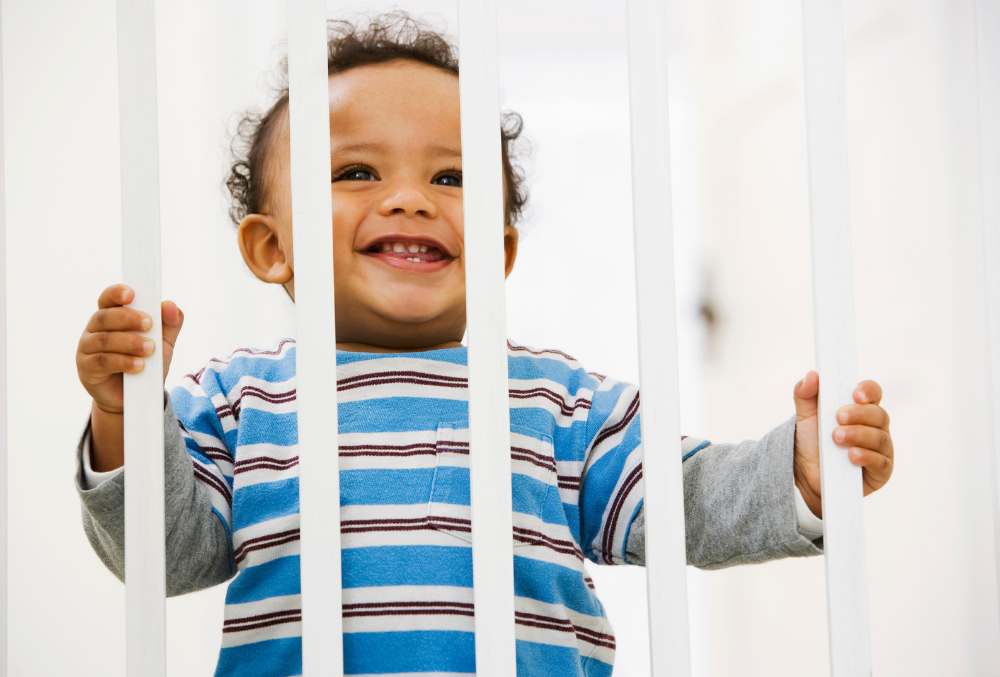
18 Jun How to Baby Proof Your Home in a Weekend!
Babyproofing your home is hardly a one-time event. As your child grows, so do the potential hazards they’ll face. It doesn’t matter what style of home you live in, perhaps you live in a single-story condo in Miami, FL, or a three-story home in Atlanta, GA, baby proofing your space is vital to your child’s safety. What will your child be able to get into once they start crawling, walking, or even climbing? It’s hard to tell, but that’s why we gathered tips from experts in the field to share their knowledge on how to properly babyproof your home in a weekend.
Keep wires, cords, and plugs out of the baby’s reach
Certainly, 2020 deepened our dependence on electronic devices and, with this, increased the numbers of plugs, wires, and electric cords crisscrossing our homes at ground – i.e. baby – level. These present risks of electric shock and/or burn and are also tripping and strangulation hazards. But the little ones love them — my own 15-month-old toddler towards stray wires with purpose and glee. The best approach? Out of sight, out of the baby’s mind, hands and mouth. Secure furniture pieces in front of plugs and wires or, if that’s not possible, invest in covers for your outlets and power strips. Make sure all cords and wiring are kept as short as possible and secure them down with cord covers or strong tape. -Sarah Ash Combs, MD FAAP, Director of Outreach & Attending Physician, Emergency Department, Children’s National Hospital
Make sure the crib is completely empty!
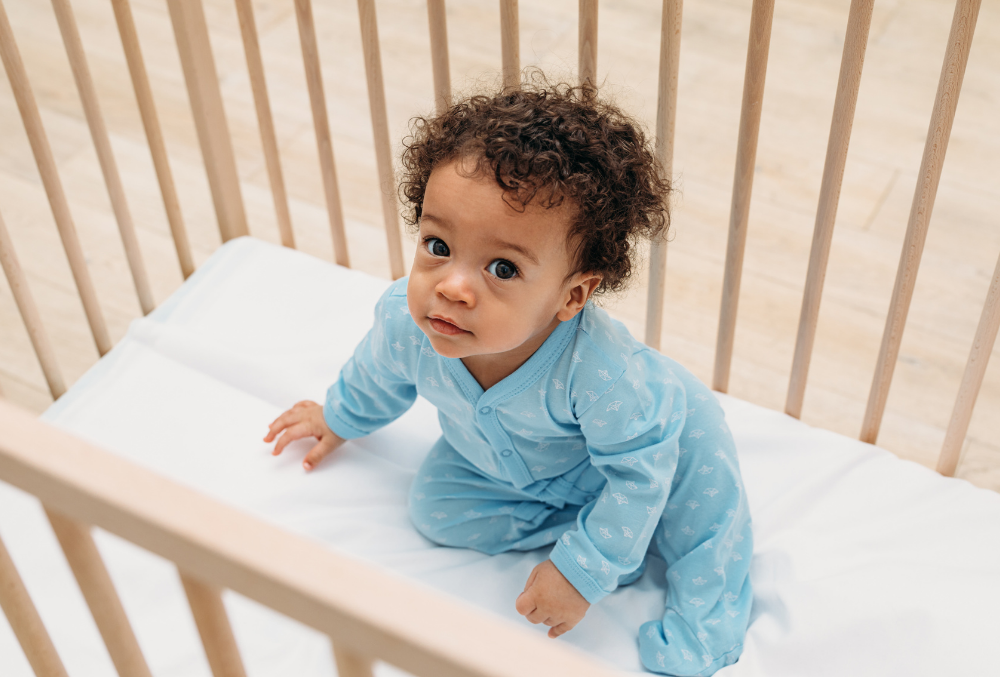
When putting a nursery together it’s important to make sure to keep the crib completely empty. The crib should not have any stuffed animals, blankets, or bumpers. Any mobiles hanging above the crib should not be more than 7 inches long and it’s important to not hang anything heavy on the wall next to the crib. –Leigh Aberle, Owner of Family First Household Staffing Agency
Get on your child’s level to do a final search of the home
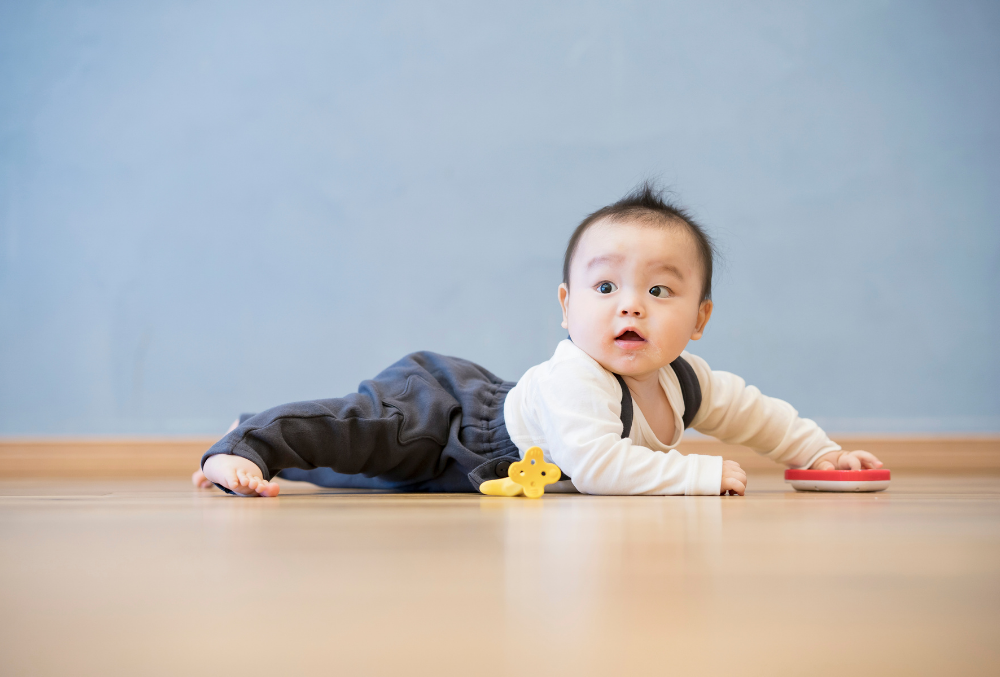
Babyproofing is so important because those little investigators can get into really harmful and dangerous things in the blink of an eye! At Children and Family Resource Center, we recommend you get down on your hands and knees and really take a good look around your space from the perspective of your baby. While you’re crawling around, look for every single thing you can put in your mouth, bump your head on, and pinch your fingers in. We can miss a lot of things from our vantage point as parents. –Children & Family Resource Center
Once you think you’ve finished babyproofing your home, get down on your hands and knees to do your final inspection at your child’s level. This way, instead of trying to think of everything, you’ll see what they see and what’s within their reach, so nothing will be missed. –Child Care Village
Be sure the floor is clear of choking hazards
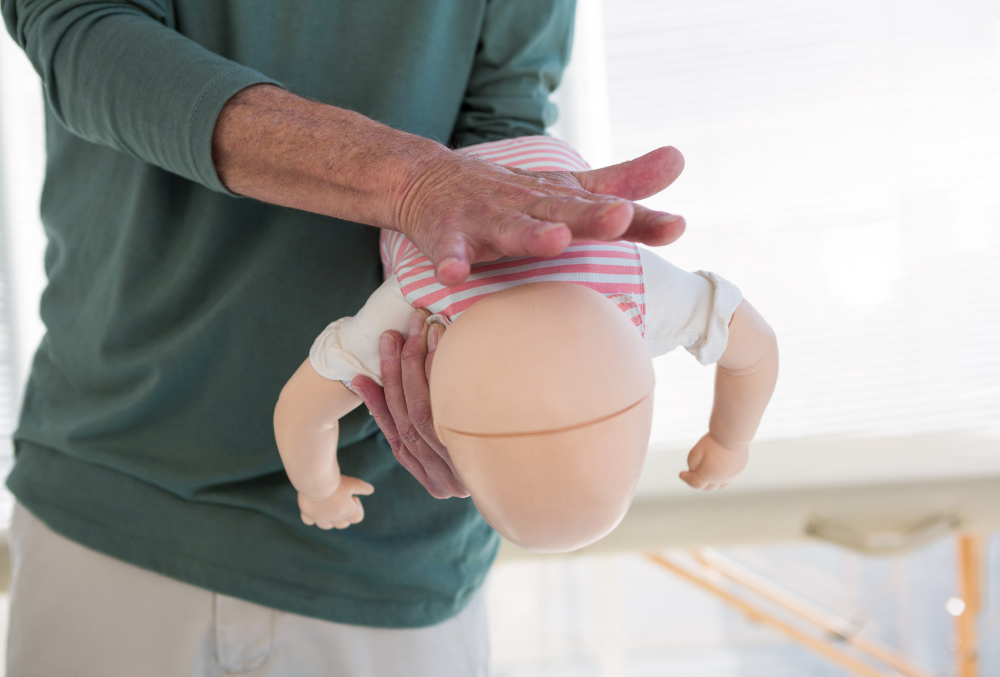
Babies learn through their senses, and in the first years of life, they learn a lot about their world through their mouths. If you’ve got a toddler, you can be sure that everything they can put into their mouths, they will. Don’t be embarrassed to get down on the floor and explore your home from the perspective of your baby. A good rule of thumb: if something fits inside a toilet paper roll, it is a potential choking hazard. This is especially important if you have older children who play with colorful Legos, puzzles, or other toys and games with small pieces. –Children’s Council of San Francisco
Scan your space every day!
Purses and tote bags can contain medication or hard candies, which can be serious choking risks for curious young children. Check your living space daily for hazards, because not all items will have been present when you went over your original babyproofing checklist. Designating a hook or shelf for handbags will keep them safely out of reach. -Wendy Valentine, Family ACCESS
Remove any furniture with sharp edges or that is wobbly.
Baby proofing is extremely important before a child reaches mobility in which when they start to crawl, pull themselves up, and walk. We highly suggest removing any tables or surfaces that have sharp edges, removing any furniture that is loose or wobbly such as light shelving or chairs, and replacing it with solid and more round-edged pieces of furniture. –Hello Sitter
Secure any heavy objects that could potentially tip over!
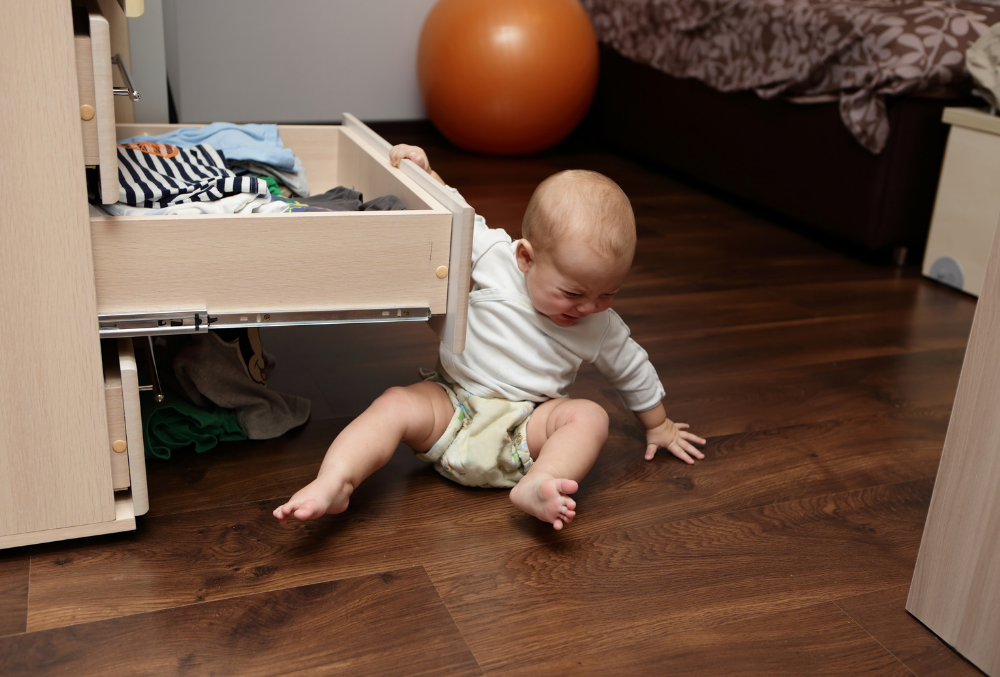
When baby-proofing your home, here are a few important things to remember! First, any heavy objects that could potentially fall over, like TVs or bookshelves, should be secured to the wall so they can’t tip over, as when babies are learning to walk, they often use furniture to pull themselves up. Second, make sure all your cleaning supplies or anything else that would be dangerous to consume is in a location that is out of reach of children or securely locked. Finally, invest in a few baby gates to block off access to stairs or any rooms you don’t want your baby getting into. Remember, as your baby grows and is capable of more, you may need to adjust the baby proofing in your house. These are just a few tips to help make your home safe for your baby! –Knightsbridge Nanny Agency
Take baby proofing one step at a time
You have a lot to prepare for as expecting parents; take babyproofing one step at a time. When your newborn comes home he will not be mobile for a while, so just be sure he has a safe place to sleep following AAP guidelines and a clear floor for tummy time. However be sure to include outlet plugs, tv/furniture anchors, cabinet/drawer latches, corner guards, and gates on your baby registry so as your baby grows your house adapts along with him. –Boston Baby Nurse & Nanny
Install carbon monoxide and smoke detectors on each floor of the home
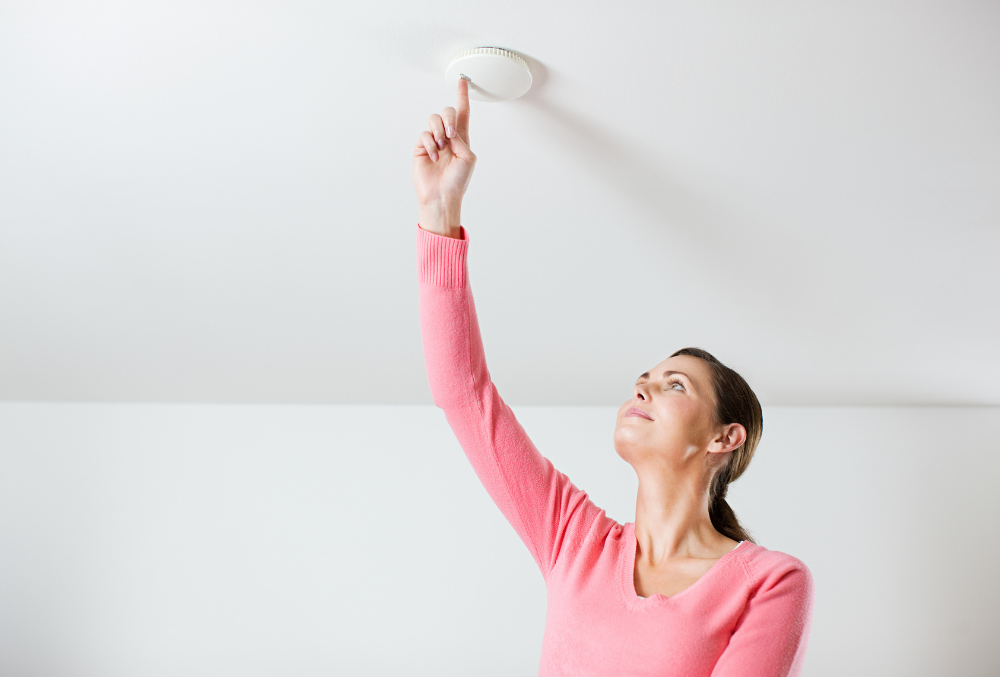
Be sure your house number is in view and your home is accessible for emergency vehicles. Installing a carbon monoxide detector, smoke alarms on each floor, and making sure they work with new batteries are essential. Changing these batteries at daylight savings time is best, all you need to do is set an alarm in your calendar for a reminder. –Coleen Siskar, Colors of Colleen
Make a list of all the areas that need baby proofing before starting the project
Grab a notebook and jot down all areas that need baby proofing. Ensure that entryways, stairs, electrical outlets, loose cords, sharp objects, and reachable drawers are accounted for. Don’t forget the fireplace and the pool! Make sure there is nothing is hung above the baby’s crib. Be sure to paint the baby’s room well ahead of arrival to lessen exposure to harmful chemicals or opt into using eco-friendly paint. –Danielle Henriksen & Pauline Thimas, owners of Elite Nannies
Hire a baby proofing company
We have found the best way to babyproof your home is by hiring a babyproofing company. Installation of high-quality gates, electrical covers, protective corners, and toilet seat covers can make a difference in not only the safety of the product but the style of your house. It is great to find a one-stop shop for all of your needs and be triggered by a professional who understands the installation and choices of the latest and greatest gadgets. –Crunch Care
(Originally Published on Redfin)